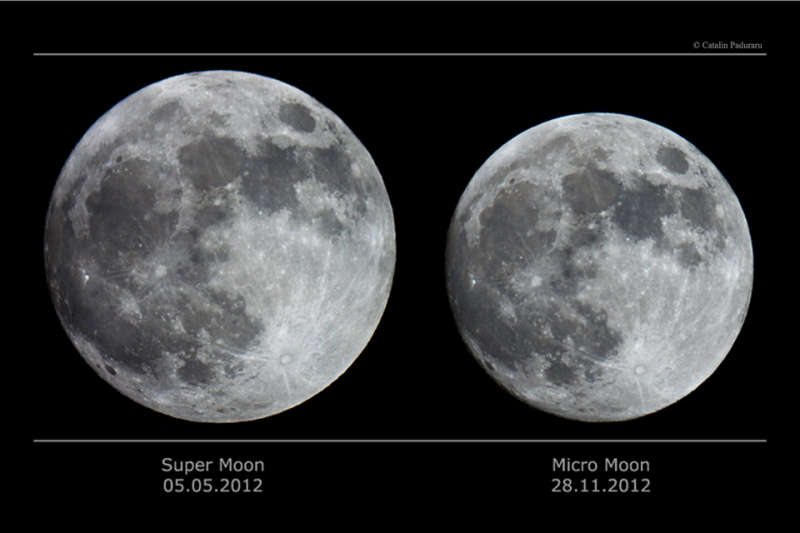Credit & Copyright: Catalin Paduraru
Explanation:
What is so super about tomorrow's supermoon?
Tomorrow, a full moon will occur that appears slightly larger and brighter than
usual.
The reason is that the
Moon's fully illuminated phase occurs within a short
time from perigee - when the Moon is its closest to the Earth in its elliptical orbit.
Although the precise conditions that define a
supermoon vary,
tomorrow's supermoon will undoubtedly qualify because it will be the
closest, largest, and brightest full moon in
over 65 years.
One reason
supermoons are popular is because they are so easy to see --
just go outside and sunset and watch an impressive full moon rise!
Since perigee actually occurs tomorrow morning, tonight's
full moon, visible starting at
sunset, should also be impressive.
Pictured here, a
supermoon from 2012 is compared
to a micromoon -- when a full Moon occurs near the furthest part of the Moon's orbit
-- so that it appears smaller and dimmer than usual.
Given
many definitions, at least one
supermoon
occurs each year, with another one coming next month (moon-th).
However, a full moon will not come this close to Earth again until 2034.
1999 2000 2001 2002 2003 2004 2005 2006 2007 2008 2009 2010 2011 2012 2013 2014 2015 2016 2017 2018 2019 2020 2021 2022 2023 2024 2025 |
Yanvar' Fevral' Mart Aprel' Mai Iyun' Iyul' Avgust Sentyabr' Oktyabr' Noyabr' Dekabr' |
NASA Web Site Statements, Warnings, and Disclaimers
NASA Official: Jay Norris. Specific rights apply.
A service of: LHEA at NASA / GSFC
& Michigan Tech. U.
|
Publikacii s klyuchevymi slovami:
polnolunie
Publikacii so slovami: polnolunie | |
Sm. takzhe:
Vse publikacii na tu zhe temu >> | |
